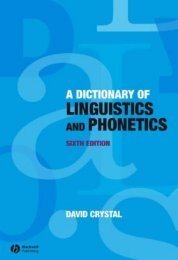url?sa=t&source=web&cd=3&ved=0CC0QFjAC&url=http://www.teachingenglish.org.uk/sites/teacheng/files/B369-Young-Learners-Activity-Book_v10
url?sa=t&source=web&cd=3&ved=0CC0QFjAC&url=http://www.teachingenglish.org.uk/sites/teacheng/files/B369-Young-Learners-Activity-Book_v10
url?sa=t&source=web&cd=3&ved=0CC0QFjAC&url=http://www.teachingenglish.org.uk/sites/teacheng/files/B369-Young-Learners-Activity-Book_v10
You also want an ePaper? Increase the reach of your titles
YUMPU automatically turns print PDFs into web optimized ePapers that Google loves.
TeachingEnglish <strong>Young</strong> <strong>Learners</strong> <strong>Activity</strong> <strong>Book</strong><br />
Introduction<br />
Introduction<br />
There are many books of activities for<br />
teaching English in the primary classroom,<br />
but this book is different. It is different<br />
because all the activities have been tried<br />
and tested by the very people who are<br />
going to use them, teachers like you. These<br />
teachers work in the most diverse contexts<br />
and conditions, sometimes with large classes,<br />
sometimes with very small groups, sometimes<br />
with every type of resource you could wish<br />
for, sometimes with only a board to support<br />
their teaching. However, they share a desire<br />
to help their students to learn English in an<br />
enjoyable way. We imagine you too share this<br />
desire and that is why you have picked this<br />
book. We hope you find the activities useful,<br />
engaging and fun too, and enjoy using them<br />
in your class.<br />
How the book was born<br />
The book is the direct result of a year-long<br />
project called ‘Investigating Global Practices<br />
in Teaching English to <strong>Young</strong> <strong>Learners</strong>’ (<strong>www</strong>.<br />
<strong>teachingenglish</strong>.<strong>org</strong>.<strong>uk</strong>/publications/globalpractices-teaching-english-young-learners).<br />
A number of primary school teachers who<br />
responded to the survey in this study told us<br />
about the kinds of activities they used in class<br />
to motivate their learners. We felt that these<br />
ideas deserved to be shared with primary<br />
teachers all over the world, and so the idea<br />
for this book was born.<br />
We contacted over 1,000 teachers who had left<br />
their e-mail addresses on the survey site and<br />
asked them to send us their favourite activities<br />
for teaching English to young learners. From<br />
the many we received, we selected the 50 that<br />
we felt were the most original and creative, but<br />
also the most practical for the greatest number<br />
of teachers. In most cases, we have edited the<br />
original activity in order either to provide very<br />
clear guidance, or to make it more appropriate<br />
for teachers everywhere. We are extremely<br />
grateful to all those who sent in activities,<br />
whether they are included here or not, and<br />
to teachers who gave us their opinion on<br />
them, such as teachers of young learners<br />
at the JALT 2011 conference in Tokyo.<br />
The Activities<br />
For each activity, we give the ages of the<br />
children it is suitable for and the time it takes.<br />
Both of these should be taken as guides only.<br />
Very often, the English level of the children is<br />
more important than their age to the success of<br />
the activity. In addition, the timing of the activity<br />
depends on the size of the class or how quick<br />
the children are to respond. You will always be<br />
the best judge of whether an activity is suitable<br />
for your class and how long it is likely to take.<br />
Each activity has a section called Alternatives<br />
in which we give different ideas for using the<br />
activity. These are either related activities that<br />
were sent in by other teachers, or our own ideas.<br />
There is also a section called No Resources?,<br />
which suggests ways of doing the activity even<br />
if you do not have access to the resources<br />
needed, such as computers, flashcards or even<br />
sufficient coloured paper for all the children.<br />
We have also included a Preparation section<br />
so you will know how long it will take you to<br />
prepare for each activity.<br />
We know that many teachers work with large<br />
classes and so we have indicated if the activities<br />
are suitable for this context. We take a large<br />
class to be 30+ children. Even where activities<br />
are indicated as not being suitable for large<br />
classes, it is worth looking at the Alternatives<br />
section as often we suggest an approach for<br />
using the same activity with large classes.<br />
© British Council 2012<br />
3





